Top 7 Biggest Hidden Costs of Mobile App Development
Developing a mobile application can be expensive. It’s common to spend more than expected. In this article, I’ll provide you with a list of possible hidden costs of mobile app development.
How much does it cost to develop an app?
Before discussing the hidden costs of mobile app development, let’s find out how the cost of app development is formed.
App development cost depends on these factors:
- Features
- Design
- Hourly rate of your development team
- Project size
The biggest factor that influences an app’s cost is the hourly rate of developers, and that often depends on location. For example, an application that costs $40,000 to build in the US will cost around $9,000 if developed by engineers in Ukraine.
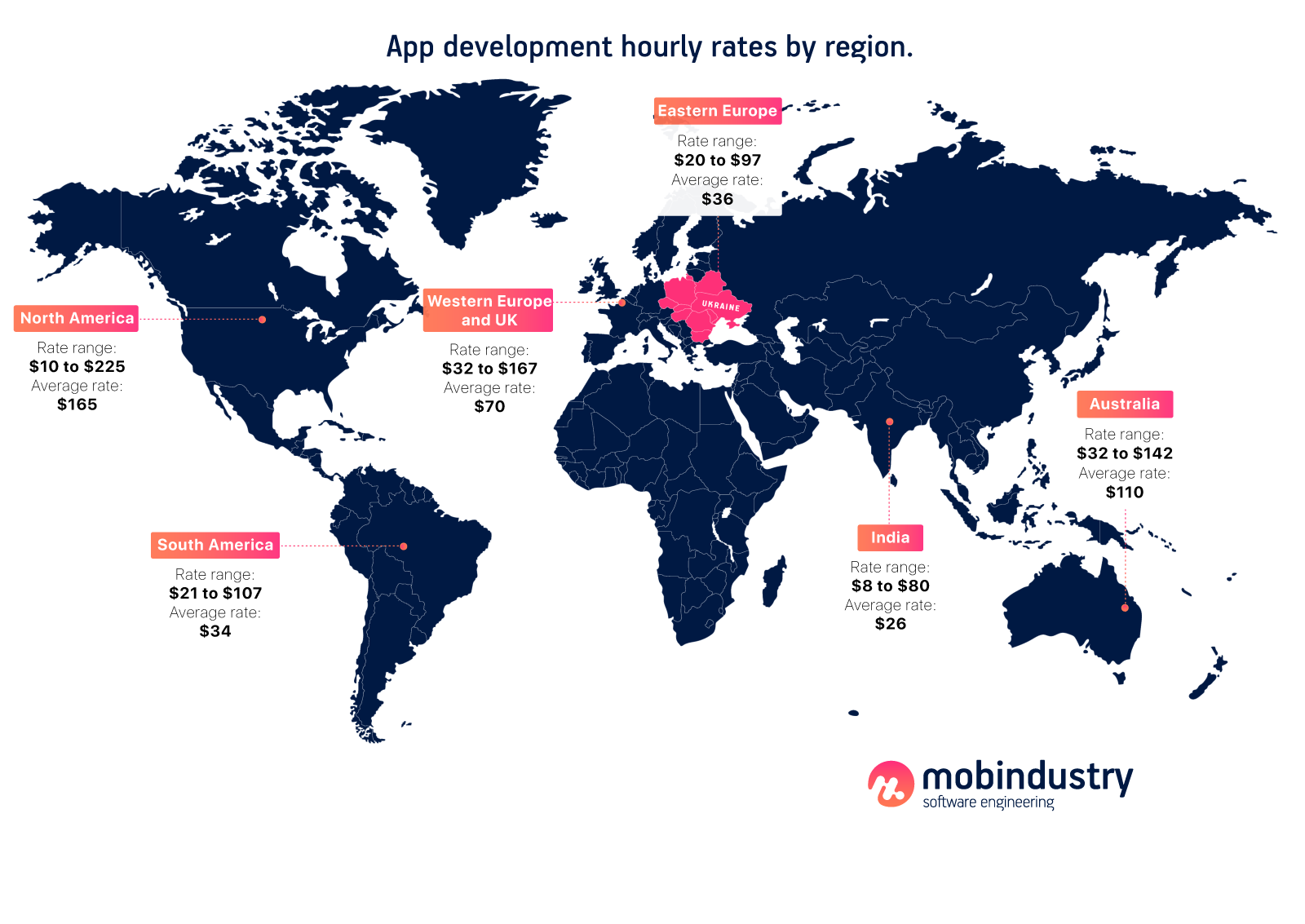
Developing your app with a company based in Eastern Europe is cost-effective and gives you access to top talent.
Cost of mobile app development
The final cost of application development depends on many factors. Here’s what Buildfire and Comentum have to say about the cost of mobile apps:
- Developing and deploying your own native mobile app can cost anywhere from $30,000 to $200,000. (Buildfire)
- Maintaining a medium-sized mobile app can cost you $5,000 to $10,000 per month. (Comentum)
- The development stage is approximately 35% of the total cost of a mobile application development project. (Comentum)
- The annual cost of supporting and maintaining a mobile enterprise application can be up to 50% of the total development cost. (Buildfire)
Types of hidden costs of mobile app development
The hidden costs of mobile app development can be divided into four categories:
- Functional costs
- Administrative costs
- Infrastructure costs
- IT support costs
Let’s dive into each of these categories.
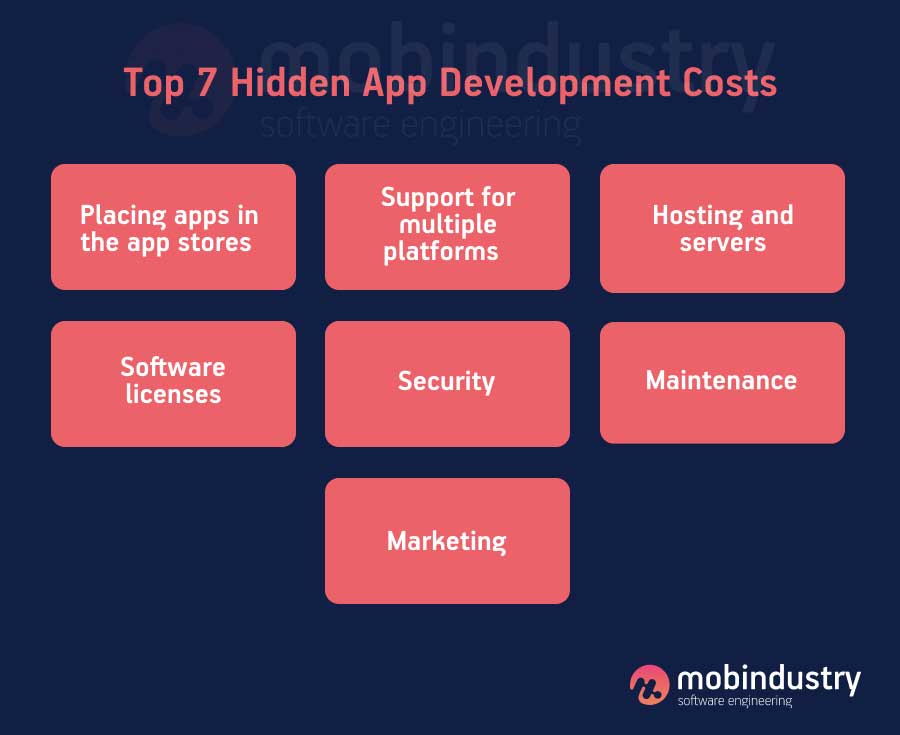
Functional costs
Functional costs are the costs of implementing an app’s functionality. To make a particular functionality work, you might need to subscribe to a service that provides a delivery mechanism. The number of services used by apps varies, and sometimes the list is endless. As for the cost of these services, it may be hundreds or even thousands of dollars per month. Here are a few examples of paid services:
- SMS notifications. To integrate SMS messages into a mobile app, you can use a service like Twilio.
- Push notifications. It’s hard to imagine an app that doesn’t take advantage of this important mobile capability. Push notifications increase user interactions with your app and prompt users to take the desired action, such as make a purchase. If you need push services, you’ll need a service like UrbanAirship or PushWoosh.
- Social media integration. You can use social media integration services to encourage sharing and voting on your content on social media. If you want social interactions in your application, you’ll probably need to subscribe to services such as one-to-one chat, group chat, and bot integration provided by Applozic and SendBird.
- Email. To integrate email functionality into a mobile app, you can use services like Mailgun or Sendgrid.
Administrative costs
Administrative services can provide you with constant access to data so you can update your app’s content and manage users without contacting the IT department. The costs of such administrative services are hard to predict and mainly depend on the type of mobile app you’re developing. These costs add up, and you’ll have to pay them on an ongoing basis. Here are a few examples of such paid administrative services:
- Content management tools
- Dashboard emulators
- Functional services management
- Dynamic updates
- Analytics/event collectors
- Access controls
- Data segmentation
Infrastructure costs
Infrastructure costs include expenses for app hosting, data storage, and data delivery. These services also require redundancies and load balancers for backup and security servers. All of this adds to both the cost and complexity of a project. Examples of infrastructure cost items:
- Servers. This is where your application will be hosted. If you aren’t working with the largest of enterprises, you’ll want to outsource hosting to companies like Amazon, Google, and Microsoft.
- Content delivery networks. This is a system of distributed servers that deliver content to an application based on the user’s geographic location, the origin of the content, and the content delivery server. If you have users all over the world and they have to go back to one remote location to access content, your application won’t perform well. CDN services are provided by companies such as Akamai, CloudFront, and Dyn.
- Data storage. Your application will probably collect a lot of data. It’s important to understand how and where this data will be stored.
- Image data. Most applications use a lot of images. You’ll need space to upload, process (resize, crop, etc.), and deliver images. Such services are provided by companies like CloudImage.io, Google, and ImageX.
- Development tools, libraries, and support. If you use paid deployment tools such as IBM MobileFirst, Kinvey, Kony, or Appcelerator to develop your applications, you’ll need to subscribe to them for the life of your application.
IT support costs
You can’t make a high-quality app without IT support services/ Continuous technical support is a major part of maintaining any app. The only problem is that support costs can increase over time. Examples of IT support services include:
- App update submissions
- iOS and Android updates
- API maintenance
- Bug fixing
7 hidden costs of developing an app
Releasing the app to the app stores
When developers build mobile apps, they keep in mind app store requirements. But ask the development companies on your shortlist if they will also handle placing your app in the app stores. Not all companies do that.
When it comes to app store fees, the cost isn’t that significant. The Apple App Store and Amazon charge $99 a year, and Google Play charges a one-time fee of $25.
When you release an app to an app store, you have to play by the rules of that store.
The requirements can change with new updates to the app store, and your app will have to be updated to comply. And additional changes always mean additional costs.
If you want to distribute your app exclusively within your organization, you’ll need to pay $299 a year to join the Apple Developer Enterprise Program and provide your app via the App Store. Google Play doesn’t charge for this service.
Here’s a list of information you need to prepare before submitting your application.
| For Google Play | For the App Store |
| Screenshots | Title (name) |
| Name | Short description |
| Description keywords | Full description |
| Support URL | Screenshots |
| Marketing URL | High-resolution icon |
| Privacy policy URL | Featured graphic |
| App icon | Promo video (optional) |
| Categories | Type and category |
| Rating | Content rating |
| Copyright | Languages and translations (if any) |
| Demo account | Contact details |
| Version information | Privacy policy |
| Pricing information | Compatible devices |
| Pricing and distribution |
Some of the materials listed will cost you nothing to produce, while others will be quite expensive. Creating a copyright and privacy policy usually takes time and expensive legal services. How much does it cost to list an app in an app store if a development company helps you? Releasing an application can take different amounts of time depending on the amount of work the company has to do. The cost will be calculated based on your development company’s hourly rate.
In addition, the Google Play Store charges a 15% to 30% transaction fee if you sell products in your app or offer in-app purchases or subscriptions.
Also, remember that before your app is published on the app store, it must go through an approval process. This procedure can take some time and require additional development costs. Because if your app doesn’t meet platform rules or requirements, it won’t be accepted.
If your app isn’t accepted, you may need to make a few changes in order to get it approved. A few mobile app development companies provide their services until your app gets approved, but others don’t.
Marketing
Developing a mobile application can take quite some time. Then comes the release to the app store. People wait a long time not only to see their product in action but to see it succeed. But even if a product is well built, it still needs to beat its competitors. A quarter of mobile apps are only opened once. Usually, this is due to poor marketing. You need to make sure your target audience can see, try, and like your app.
Planning quality marketing strategies and campaigns is vital for spreading the word about your app and increasing sales. But it comes with a price. Basic PR and marketing support will cost around $5,000 to $10,000 a month. Some companies spend over $100,000 a month to keep their mobile app at the top.
For an additional free marketing approach, you can use app store optimization (ASO). It’s the easiest way to generate organic traffic. If you’ve ever promoted a website, you already know what SEO is, but there are some differences. ASO uses a set of keywords along with a text description, product name, and visual design components to attract the target audience.
Maintenance
Any app, whether it’s a mobile web app or even a website, needs regular updates, maintenance, and technical support. But not all app development companies provide maintenance services. So before signing a contract for app development, confirm that a company will take care of the app after its launch. Mobindustry always takes care of the products we release.
Good app developers keep up with iOS and Android operating system updates. This means that cooperation with your development company should not stop after your app is launched. Sure, keeping your app updated requires more investment. So discuss the price of app maintenance before you start development.
Companies fall into the trap of thinking of mobile app development as a one-off project. But it’s actually an ongoing process. Many companies are confused about the extent to which they should support their application. To keep your app working, you’ll have to fix bugs, apply security fixes, update it with every new operating system version, support users, and so on.
The biggest unexpected cost is for ongoing application maintenance. Most apps need additional work when a new operating system is released, changes are made to APIs that the app uses, or user expectations change. Maintenance costs can far exceed the initial cost of building the application.
This applies to all platforms, but especially to native apps. Native apps require constant operating system and device compatibility updates. Although mobile web applications require maintenance, they aren’t affected by operating system and hardware changes.
App security
App security is a major concern. Users have to trust your app with their information. For this reason, you should have a proper security plan.
Here’s a list of things you should know before making a security plan with your development team:
- If your development team wants to use third-party frameworks and libraries, make sure they check their security.
- Ask your developers to test code for vulnerabilities as much as possible.
- Reduce the number of access permissions in your app. Don’t offer access to contacts or the camera unless it’s necessary.
- Make sure your development team performs regular code reviews.
Note that if you include all these activities in the app development process, it will take longer than you expected. The cost will also go up. But in the long run, it will ensure your app is secure. Also, remember that your app needs to stay in compliance with applicable laws.
Hosting and servers
Once your app is ready, you need to store and process its data somewhere. That’s another cost of app development. Usually, all data (photos, videos, locations, etc.) is stored on servers. Servers run software that takes requests, processes them, and returns a response. Almost every mobile application has a backend server.
For data storage purposes, many developers today prefer to use cloud services. You can use mobile backend as a service (mBaaS) solutions, Amazon Web Services, or build your own cloud service.
So, you need to consider server cost for mobile app. Pay attention to monthly cloud storage fees, which usually increase as your app grows. Facebook pays about $1.5 billion annually for data storage.
Nowadays, the most popular cloud storage service is Amazon S3. At first, Amazon data storage won’t cost you a thing. Your app can store its data for free. But as soon as it needs more than 5 GB of storage, you’ll have to pay.
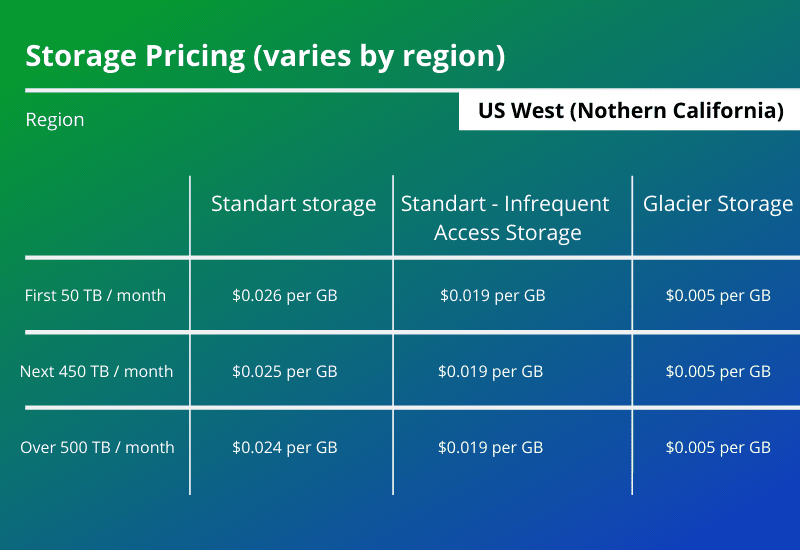
Remember that storage fees are not the only expense associated with cloud storage. You also might need to pay for different manipulations with data like requests, storage management, data transfers, etc.
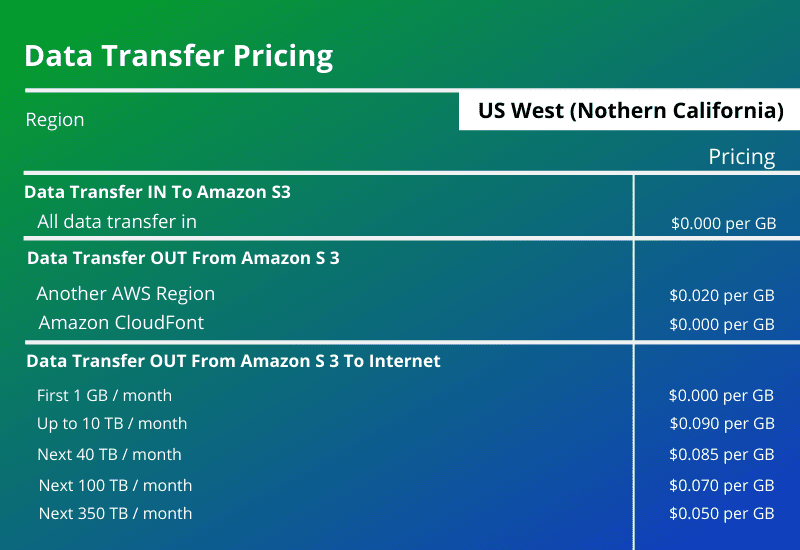
You can find a full list of costs for S3 services on the Amazon S3 pricing page.
Software licenses
When developing a mobile application, you might need to use different SDKs and libraries. Most of them are free and open-source. But some are paid or offer paid upgrades from the limited free version. This kind of software allows developers to decrease the time they need to implement features.
For instance, say your app needs flexible search, a feature that lets users search anything they need by name, location, and other parameters. Your development team could build this functionality from scratch, but it would be time-consuming, taking up to 100 hours. To get a rough estimate of how much it cost to develop an app, just multiply the time required by your developer’s hourly rate. A developer’s rate depends on the region and company.
To save some money and time, it’s common to use paid solutions. By paying for a software license, you can decrease the cost of development. However, it’s best to consult with professionals when making this decision. Your development team will know what’s best for your project.
Here are some paid versions of popular libraries:
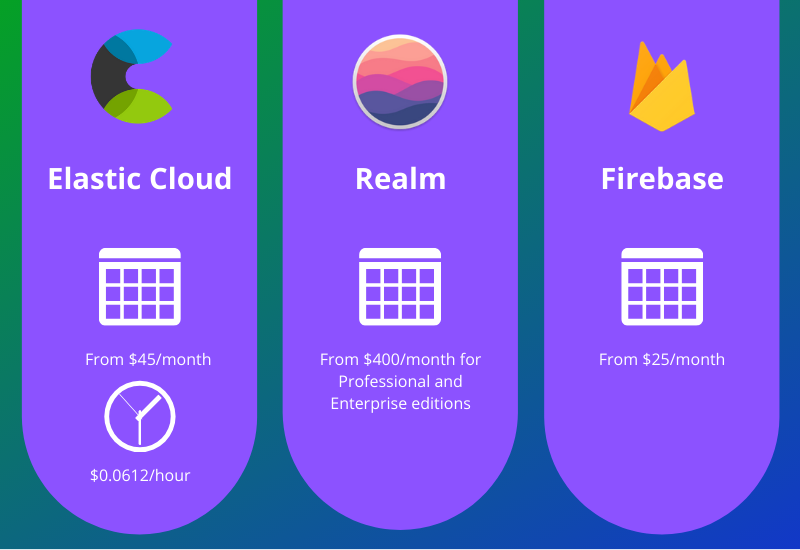
All these solutions have free versions, but their full versions have more functionality.
Multiple platforms
If it’s your first time making an app, you might be surprised that each mobile platform requires its own programming languages. A native iOS app won’t work on Android, and vice versa. If you’re going for native development, you’ll need both iOS and Android developers Due to this, the mobile app development cost will increase.
This only concerns native apps, however. Hybrid apps are built with web technologies and run on multiple platforms.
Mobile web applications are deployed over the internet and run on all platforms. The cost of reaching all platforms with a native app depends on the type of app and the features desired.
Cost to design a mobile app
Some companies suggest that the mobile app developer should do the design as well. This is a mistake. A good designer is absolutely essential for the success of a mobile app.
So why is design so important? A poorly designed and confusing interface is one of the main reasons users uninstall an app. You may have the best app in the world, but if you skimp on design you’ll alienate users before they realize how useful your app is.
Cost of mid-project changes
Mobile app developers provide cost estimates based on initial requirements. However, requirements change. Some business users need additional functionality. Others want to change the design. Each change adds to the cost. Many companies enter a project with a budget in mind and are shocked when they see the final bill.
The biggest problem is underestimating what a development company will end up charging. Development companies usually give reasonable estimates, but often projects ultimately take much longer than estimated because of various changes along the way. How much the final bill deviates from the initial estimate will depend on the type and number of changes in the middle of the project. For example, changing the color of a button is obviously cheaper than adding GPS tracking and location capabilities.
How can you prevent the hidden costs of mobile app development?
Does your app development budget include the expenses we’ve mentioned in this article? If not, make sure you’ve covered them in planning your final budget. Remember that these costs can increase as your application grows.
In the end, you don’t want your app to cost more and more as it grows. So is there a way to prevent unexpected costs? It all depends on the number of additional features and services you want to include in your application.
Here are some general tips to prevent hidden costs from growing as you scale.
Select technology that’s appropriate for the lifespan of the product.
The technology you choose for your application will have a lasting impact on its success.
If you plan to expand your app in the future, you need to ensure that the technology and infrastructure you choose is capable of supporting high-traffic operations. Scalability and maintenance can be a problem when working with a large user base.
Make sure you’re using flexible and reliable technologies such as React Native or Flutter for unlimited scalability.
Know the key platform
Do you want your application to be available to every smartphone user? It’s good to have a holistic approach and reach all corners of the market. But over time, this approach can become very expensive.
For example, if your target audience is US users, then developing an iOS app makes perfect sense. Sometimes it’s wise to avoid an all-inclusive approach, especially if you’re on a tight budget. Of course, you need to do a little market research before deciding which platform to choose.
Don’t rely too much on third-party tools
People usually purchase third-party tools or subscribe to SaaS platforms to improve the functionality of their applications.
But don’t rely too much on these tools. Just because their marketing slogan is “easy to implement” doesn’t mean they’re so simple.
Even implementing SaaS solutions requires a certain amount of planning, programming, and testing. Therefore, select the features that directly impact your business’s bottom line, then subscribe to third-party tools to implement those features.
Conclusion
Developing a mobile application is expensive and time-consuming. I hope that now you know how much app development cost. The cost of a mobile app mainly depends on its features, design, and project size as well as the hourly rate of your development team. But there are also a few hidden costs of mobile app development that are not so obvious. In this article, we explained what these costs are and why you need to pay them. To sum up, here’s a list of the top seven hidden costs of mobile app development:
- Placing apps in the app stores
- Marketing
- Maintenance
- Security
- Software licenses
- Hosting and servers
- Support for multiple platforms
Before signing a contract to develop your mobile app, discuss these costs with your development team. It might save you money in the long run and it will certainly help you plan your expenses more accurately.


